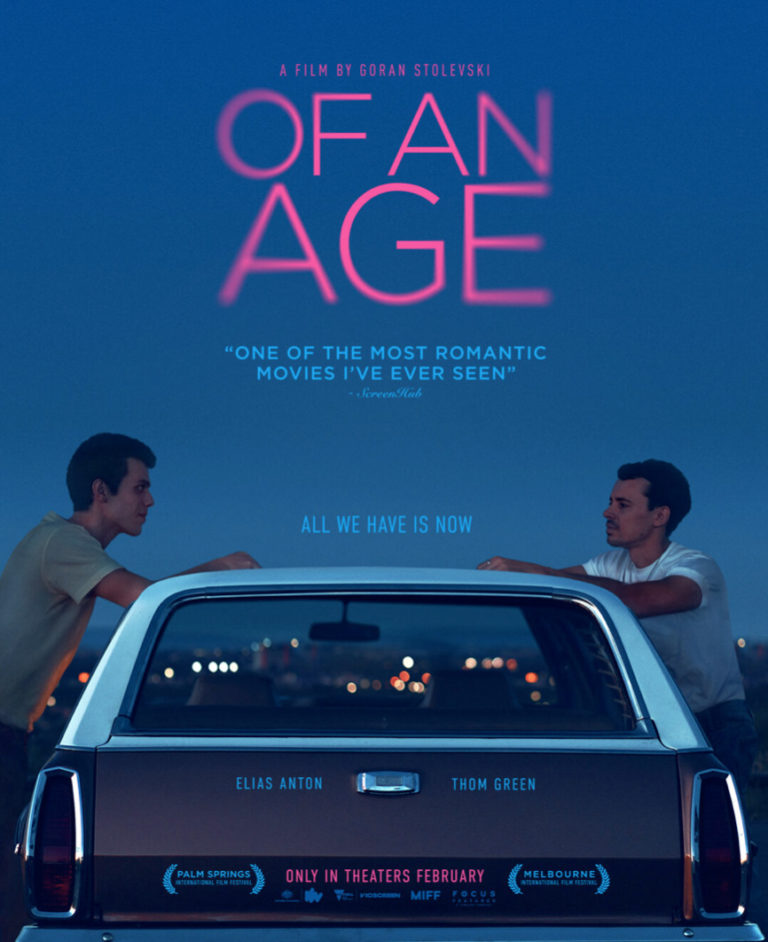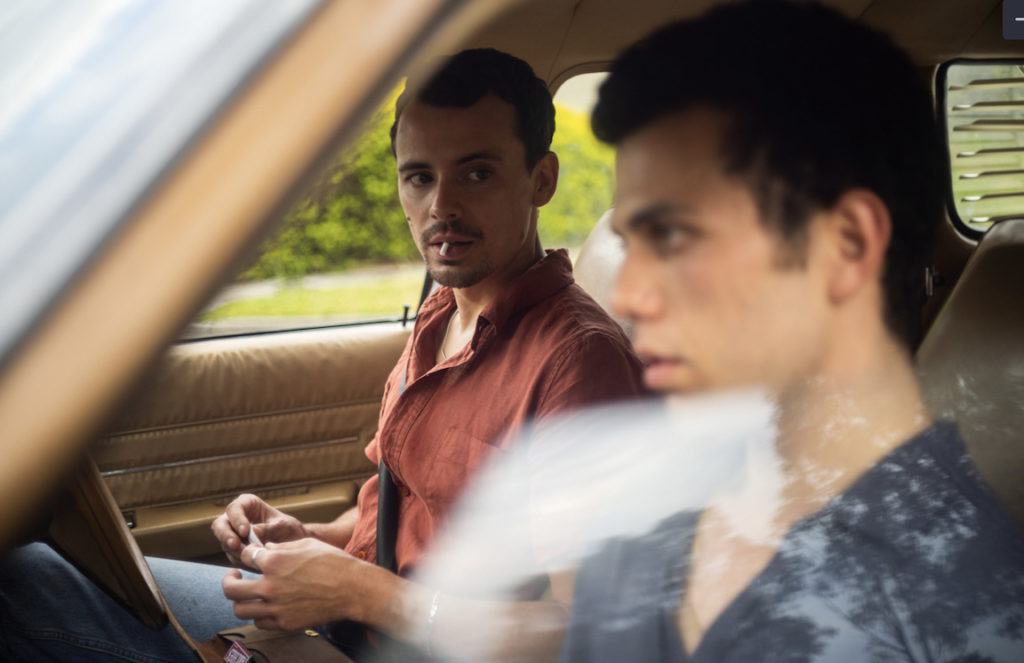
Exclusive Interview with Director Goran Stolevski
Q: Even though both your films were distributed by Focus Features, this film is really quite different from your previous feature film, “You Won’t Be Alone”. So how did the concept for this film come up initially?
GS: It was not at all a strategic thought, really. It was before I started “You Won’t Be Alone” during one of the Covid lockdowns. It was raining a lot, and I was reading a short story about a boy in high school. It was unrelated to what this film is, but at one point this boy goes to his first party. While I was reading that story, it took me back to one time I went to a party in high school and I had a good memory of who I was, what that felt like, what I thought life would be like, what I thought life was in that moment. I wasn’t sure what was happening. It’s not a time in my life I think back to very much. It’s not like it was traumatic, it was just that I always found it insignificant, essentially.
Suddenly, I was like, I want to spend time with this mindset, this feeling, in the context of my understanding of myself later in life, in terms of relationship and love and romance and sex and sexuality. In thinking about that — and this all happened very quickly — two characters emerged. Two guys talking in a car, and the dialogue started coming to me in a flow of words. I was trying to keep up with that thinking. And a week later the script was finished.
Q: The story takes place back in 1999 and people assume Kol is gay and some people are critical of Adam as well. When you see Australian actors such as Mel Gibson, Russell Crowe, Hugh Jackman and Chris Hemsworth, there’s a very masculine type of acting. What was the perception of the gay community and how has it changed from 1999 to now?
GS: I’m well aware of the very queer men in Australia as well. I never felt there was a lack there compared to other countries. I was a migrant kid in the late 90s — I didn’t want to be a migrant, I didn’t want to be in Australia, especially with actors and movies. Those are not the career trajectories I was following. I wanted to be where Isabelle Huppert is, I wanted to be where Katharine Hepburn [was]. For me life was elsewhere, not at all in Australia.
So in terms of writing, I was writing in the context of someone who doesn’t really feel at home — not just in his suburb or country, but in his skin, really, in his body. And in terms of how it’s changed, well, in 1999 in my school, there wasn’t an openly gay kid. I finished high school in 2003 and I was “out” in my final year of school. That was the first time that happened, and I was the only one. I was very lucky, it wasn’t a traditionally unpleasant experience or anything. But it was quite lonely, and I was dumbstruck that I couldn’t find anyone else.
Luckily I had technology, and there was the Internet to connect you, so I had access to meet other people. But in 1999, you didn’t have apps, you didn’t have iPhone and things that could connect you with people who were like you from far away. So I think back to 2010 when you can go back into a working-class suburb and be out and at least physically safe. But it’s a safer space than it used to be, and you’re not as distracted. When you’re not as worried and distracted, you can also reflect more, and as you’re older anyway, you’re reflecting more on life and who you used to be. So I think in that sense it’s changed.
But in terms of the notion of a “gay community”, I’m not the best person with community. I’ve always struggled with that concept. I always feel different — that’s obviously the problem with me, it’s probably psychological. I always feel different in any ostensible “community” I’m meant to belong to — whether as a Macedonian, or whatever. Even as an art student [getting] an arts degree, I didn’t quite feel as connected to the people around me that I thought I was connected to. So I feel like I’m the worst-ever person to comment on any concept of community, really.

Q: When Adam and Kol first meet, you feel the tension between them — there’s sparks flying, you see the instant connection. Can you talk about creating the “vibe”, that dynamic, between Adam and Kol?
GS: The sequences in the car have a lot of dialogue. I think in most scenes in films, we’re kind of taught to look at the dialogue as the important part. Whereas, really, I think the real conversation is happening in the eyes and silences the whole time, and I really like that. It was easy to play with text and subtext in this case because one of the two characters is a boy who really doesn’t know himself. He’s not even aware of the feelings he’s undergoing as they’re forming.
So it was almost easy to play with it, and definitely very enjoyable and kindof transfixing for me and the whole crew. We were watching two boys acting in the car, and we had two cameras running the whole time so you could see both of them at the same time, and it was transfixing. You forget [time]. There was one take that took 32 minutes because they kept going back and forth, and improvising and embellishing. And we were stunned to find out it was 32 minutes — it really felt like five. We were [that] transfixed.
In terms of getting the chemistry and the tension going, it’s luck, a little bit. In casting, I was looking at actors who I thought were more open rather than self-aware. Who were more open to connecting and interacting with people around them, rather than just putting on their selfie face and trying to be cool. And I find that’s a rare quality in actors, especially younger actors. That’s a quality they both had, and when they first met, the instinct was to connect. Each of them is very concerned about the other one feeling comfortable and respected and safe, just as a person socially more than anything.
Thom [Green] is closer to me in age and older than the other two main actors, and he was quite a nurturing presence — which you wouldn’t know if you met him the first time. He [has a way of] presence which was hilarious, and very confident, and like he owned a room. But you don’t realize how much he’s doing to protect. It took me a while to realize how much he was doing to protect Elias [Anton], who plays Kol, and Hattie [Hook] who plays Ebony. That was also a lot of chemistry because I think it was not just the chemistry between the two romantic partners but everyone else needed to feel like they knew each other.
That’s a very hard chemistry to achieve. It takes actors who are extremely open and extremely un-self-absorbed, and that’s very rare. And also among directors, I should say.
Q: There is a fabulous dance scene with Kol and Ebony. Did you have a choreographer for that scene?
GS: Yeah. We had a movement coach and choreographer, Lauren Drago, and she worked with Elias and Hattie individually and then together. We had about two and a half weeks. Elias has never danced in his life. I think Hattie did a little bit of musical theatre when she was little. But neither of them have been trained as dancers, and we were extremely lucky that they were able to learn and respond so quickly.
But also, Lauren herself is an artist in the classic sense. The choreography for both dance sequences was very specifically built in terms of what realistically could feed into the story, like why decide to do them in this way. Then to combine those [movements] with what were the first strengths that emerged for each of them as dancers, both Hattie and Elias, especially. Again, a very nurturing presence, and a very intuitive and responsive artist.
I really believe in working with what’s in front of you rather than trying to mold someone into something they are not actually. Again, I’m very lucky we found Lauren, who works in the same way. Because my problem was to cast someone because he was a good actor, even dancing, to try and figure it out through editing and construction and make the sequence flow well enough.
But then we were so lucky. We did eleven different shots for that scene at the wedding, and each of them was immaculate. There was no sense of oh, I had to cut around a false move or whatever. Even on set, everyone was transfixed and watching, and the camera could go anywhere. I didn’t have to worry about editing or anything. It genuinely [was] the best possible sequence without worrying about anything or covering anything up.
Q: Thank you.

Check out more of Nobuhiro’s articles.
Here’s the trailer of the film.

